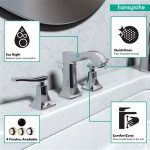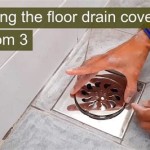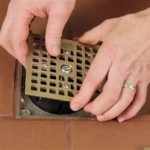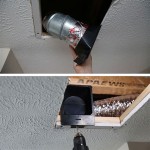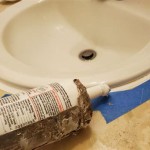Replacing Bathroom Sink Hoses: Essential Aspects
Replacing bathroom sink hoses, a critical aspect of bathroom maintenance, ensures efficient water flow and prevents potential leaks. Understanding the essential aspects of this task is crucial for a successful execution. This article will delve into the key considerations for replacing bathroom sink hoses, providing a comprehensive guide for homeowners and DIY enthusiasts.
Essential Aspects of Replacing Bathroom Sink Hoses
1. Identifying the Replacement Hoses
The first step is to identify the correct replacement hoses. Various types and sizes of hoses are available, so it's essential to measure the length and diameter of the existing hoses accurately. Consider the material of the new hoses, whether braided stainless steel, rubber, or polymer, and choose based on desired durability and flexibility.
2. Disconnecting the Old Hoses
Before installing new hoses, disconnect the old ones. Using an adjustable wrench, carefully loosen the nuts connecting the hoses to the faucet and the water supply valves beneath the sink. Be cautious not to overtighten or damage the nuts or fittings. Once loosened, remove the old hoses from the faucet and valves.
3. Installing the New Hoses
Thread the new hoses manually onto the faucet and water supply valves. Gently tighten the nuts using the adjustable wrench, ensuring they are secure but not overtightened. Place the rubber washers provided with the hoses between the fittings to prevent any leaks.
4. Checking for Leaks
Once the new hoses are installed, turn on the water supply and check for any leaks. Inspect all connections, including the faucet, valves, and hose attachments. If any leaks occur, tighten the nuts further or replace the rubber washers as needed.
5. Securing the Hoses
To prevent the hoses from moving or kinking, use hose clips or zip ties to secure them to the undersink plumbing. This will keep them in place and prevent any potential damage or leaks.
Conclusion
Replacing bathroom sink hoses is a crucial task that requires careful attention to the essential aspects outlined above. By following these steps, homeowners can ensure a successful installation that will prevent leaks, maintain efficient water flow, and extend the life of their bathroom sink. Whether you're tackling this task yourself or hiring a professional plumber, understanding these aspects will help you make informed decisions and ensure a well-maintained bathroom.

Replace Bathroom Sink Water Supply Lines

How To Replace A Water Supply Line Replacing Faucet Toilet Lines
How To Replace Bathroom Valves And Hoses

How To Replace A Faucet Water Supply Line Install Fluidmaster S Seal

Replace Bathroom Sink Water Supply Lines

How To Replace Bathroom Water Supply Lines Home Repair Tutor

Flexible Shower Hose Kitchen Sink Faucet Telescopic Replacement Bathroom Handheld Head Toilet Bidet Sprayer Nozzle Extension Water Tap Filter Garden Watering Com

1 5m Faucet Flexible Pull Out Spray Tap Hose Replace For Kitchen Basin Bathroom

How To Install A Vessel Sink Faucet

Hose Assembly Pull Out Rp44647 Delta Faucet
Related Posts
